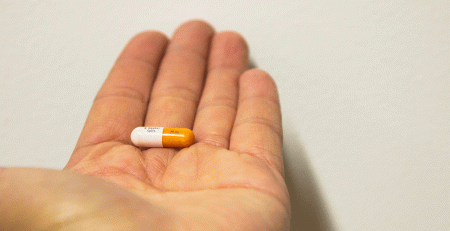Kava and kratom are being sold more often alongside each other at kava bars, stores, and online. These are plant-based supplements consumed for their mood-altering and sedative side effects. These supplements are sold in various forms, with raw leaves of both plants being used to manufacture items for consumption. Although many believe they’re similar, our Banyan Lake Worth rehab is debunking these misconceptions by sharing a comparison of kava vs. kratom that highlights side effects, risks, and more.
Questions about our Programs?
Our admissions coordinators are available 24/7 to answer any questions you may have as you consider whether treatment at Banyan is right for you or your loved one.
What Is Kratom?
Scientifically known as Mitragyna speciosa, kratom is a tropical tree native to Southeast Asia, particularly in places like Thailand, Malaysia, Indonesia, and Papua New Guinea. The leaves of the kratom tree have been used for hundreds of years for medicinal purposes. These leaves contain several active compounds, including mitragynine and 7-hydroxy mitragynine, known for causing opioid-like side effects.
If you’ve ever heard of opioids (known for their strong pain relief), then you know that they’ve become a major threat to millions of Americans. Opioids have contributed to chronic abuse, addiction, and overdose. Kratom is normally used as a powder made from dried leaves, which can be mixed into food or drinks. Kratom powder can also be made into a tea or taken in capsule form.
There are also various types of kratom, each producing more intense side effects than others. Although many claim it’s a safe and effective supplement, kratom is increasingly being used as a recreational drug.
While it’s legal in many countries, including the U.S., the topic of kratom use has become controversial due to its potential risks and side effects, including addiction, withdrawal symptoms, and in rare cases, severe liver damage. The U.S. Food and Drug Administration (FDA) has also warned about the potential dangers of using kratom. They encourage the public to speak to their healthcare providers before using the substance.
What Is Kava?
Kava, scientifically known as Piper methysticum, is also a plant native to the South Pacific islands like Fiji, Vanuatu, Tonga, and Samoa. It’s been used for centuries in traditional ceremonies and rituals, particularly in Polynesian cultures.
The root of the kava plant is used to make a drink that’s typically consumed in ritualistic ceremonies. This drink produces sedative and anesthetic properties. Kava is believed to work by interacting with the neurotransmitter gamma-aminobutyric acid (GABA) in the brain, the same one that other addictive substances like benzodiazepines and alcohol manipulate.
When GABA levels are heightened after taking substances like kava, the user may feel sedated, drowsy, or relaxed, among other side effects. While it was originally intended for ceremonial practices in Polynesian cultures, kava is now commonly consumed in social settings, where it’s prepared by grinding the root into a fine powder, mixing it with water, and straining the liquid.
Kava is known for its earthy and slightly bitter taste. Its effects can range from mild relaxation to more intense sedation, depending on how much of it the individual consumes. While kava is legal in many countries, it’s banned or heavily restricted in others due to concerns about its potential side effects, particularly how it affects the body after long-term use or when taken in high doses. These side effects can include liver damage, skin rashes, and neurological problems.
Get a Free Insurance Verification Today!
"*" indicates required fields
Kratom vs. Kava: How Are They Different?
The main difference between kratom and kava is that they come from two entirely different plant families. Some additional differences that can be found when comparing kava vs. kratom include:
- Plant origins: Kava (Piper methysticum) is a plant native to the South Pacific islands, while kratom (Mitragyna speciosa) is a tree native to Southeast Asia.
- Active ingredients: Kava contains kavalactones, which cause the substance’s sedative and anxiolytic effects. Kratom, on the other hand, contains alkaloids mitragynine and 7-hydroxy mitragynine, which act on opioid receptors in the central nervous system and can produce both stimulant and sedative effects.
- Side effects: Kratom and kava also produce different side effects, especially when larger doses of the latter are taken. Kava produces sedative and calming effects on the body, which is why people may take it to promote relaxation and improve sleep. As for kratom, it can have both stimulant and sedative side effects, depending on how much of it is taken. Users may take kratom to enhance mood, increase energy, and alleviate pain.
- Risks: When comparing kava vs. kratom, it’s apparent that both come with risks. For instance, kava has been linked to liver toxicity (especially in high doses or with frequent use), while kratom has been associated with dependence, withdrawal symptoms, addiction, and respiratory depression when taken in high doses.
- Legality: The legality of kava and kratom may differ depending on the country and region. Kava is legal in most countries, but its use is only regulated in some places because of safety concerns. On the other hand, kratom is illegal in some countries and heavily regulated in others because it produces a high similar to opioids and therefore has the potential for abuse and addiction. For instance, the Drug Enforcement Agency (DEA) has kratom on its “drugs of concern” list, though the decision to make it illegal to use has been left to individual states and counties.1 As of October 2019, six states have made kratom illegal.
While kratom and kava may have legitimate medical benefits, even prescription drugs can be dangerous if used improperly (consider the opioid epidemic, for instance). These substances have neither been approved for medical use nor regulated in medical practice. Therefore, those who become dependent on these substances, particularly kratom, may require medical detox and treatment at a professional facility to prevent long-term consequences from chronic use.
If you or someone you care about has become addicted to kratom or any other substance, our BHOPB detox center can help. Not only do we offer substance-specific detoxification services, but we also offer various levels of addiction treatment and therapy programs to support clients in both physical and mental recovery.
For more information about our addiction treatment in Lake Worth, call Behavioral Health of the Palm Beaches today at 561-220-3981 or verify your insurance here, and we’ll reach out to you.
Source:
- DEA – Drugs of Concern
Related Reading:













